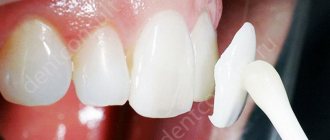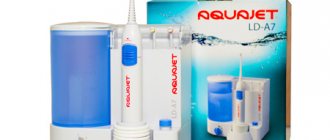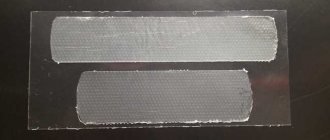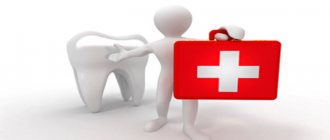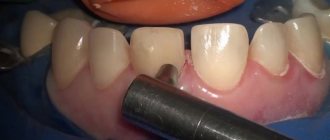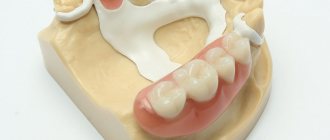In modern construction, cellular concrete blocks have become widespread. They are used both for the construction of load-bearing structures in low-rise buildings and in the construction of unloaded partitions. One of the varieties of cellular concrete blocks is twin block.
Thanks to their performance characteristics, twin blocks are widely used in both private and mass construction. This article will discuss the technical characteristics, advantages, disadvantages and possible areas of application of the building material.
In addition, the article provides recommendations for laying twin blocks and reviews from people living in houses built from this material.
What are twin blocks and what do they consist of?
Twin block is a type of aerated concrete blocks, characterized by high-precision geometry and the presence of tongue-and-groove locks. The material for the production of twin blocks is autoclaved cellular concrete.
The material consists of the following components:
- lime;
- Portland cement PC-500;
- water;
- ash (fly ash, product of coal combustion);
- aluminum suspension.
The precise geometry of the blocks and the presence of tongue-and-groove locks make it possible to reduce the thickness of the seams to 2-3 mm, which makes the wall being built almost monolithic.
Production technology
Twin blocks are made from a binder, which is Portland cement, calcium hydroxide (fluffed lime), waste from state district power plants (fly ash), aluminum suspension and water by autoclave hardening.
All components are thoroughly mixed dry and then mixed with water. The consequence of this is a chemical reaction between aluminum and calcium hydroxide (Ca(OH)2) causing intense gas formation. As a result of this reaction, foaming of the mixture occurs, resulting in the formation of a porous structure. At the same time, hydration of Portland cement occurs, causing the porous aerated concrete mass to harden.
At the next stage of production, the mixture is cut into blocks. After this, the groove-ridge elements and recesses-grippers for the hands are formed.
The accuracy of the block geometry depends on the cutting accuracy. When manufacturing a twin block, permissible deviations from the specified dimensions do not exceed 2-3 mm. Further autoclave processing at a temperature of 1900C and a pressure of 12 MPa allows achieving ideal accuracy of the shape and dimensions of the block.
In addition to high precision, autoclaving ensures homogeneity and high performance. At elevated pressure, the components of the mass enter into chemical reactions, as a result of which hydrate compounds are formed, which are characterized by high strength.
Properties and characteristics of twin blocks
Before choosing twin blocks for building a house, it would be useful to familiarize yourself with its operational properties.
Depending on the specific gravity, three grades of material are distinguished:
- D-400;
- D-500;
- D-600.
D-400
. This marking of the twin block implies structural strength, indicated by the marking B2. The material has the highest vapor permeability (0.25) and the lowest frost resistance (F50). The thermal conductivity coefficient is 0.08 W/m0C.
D-500
. Strength grade B5 with vapor permeability 0.2. Thermal conductivity coefficient is 0.115 W/m0C.
D-600
. Strength grade B5 with vapor permeability 0.18. Thermal conductivity coefficient is 0.131 W/m0C.
The main technical characteristics of twin blocks are given in the table.
| Options | Meaning | Comments |
| Strength grade | M-35 - M-50 | The material is considered quite durable. The strength class is indicated by the letter “M”. The brick has a strength class of M-150. The minimum indicator is M30, the maximum is M50. However, the mass of a brick is three times greater than the mass of a twin block, so when using blocks, the load on the foundation and support rows is much less. |
| Specific gravity | 500 (600) kg/m3 | The density (specific gravity) of twin blocks is 500 (600) kg/m3. With increasing specific gravity, its strength increases, but its thermal insulation characteristics deteriorate. |
| Thermal conductivity | 0.105 W/(m°s) | The average thermal conductivity is 0.105 W/(m°s). |
| Frost resistance | 50-100F | The material has a high degree of frost resistance and tolerates temperature fluctuations well. Experts say that the twin block can be doused with cold water 100 times, allowed to freeze, and then heated. This is the so-called frost resistance cycle. Withstands over 100 cycles. |
| Shrinkage | 0.56-0.59 mm/m. | The drying shrinkage of twin blocks is 0.56-0.59 mm/m. |
| Water absorption | 16-22% | |
| Vapor permeability | 0,18-0.25 | |
| Fire resistance | 12 hours | Twin blocks are considered non-flammable material and can withstand open fire for more than 12 hours |
| Soundproofing properties | High | Effectively protect the room from external noise by absorbing low sound frequencies. |
| Price | 3700-4200 rubles | The price of a twin block on the Russian construction market ranges from 3,700 rubles. for 1 m2 up to 4200 rub. |
| Maximum number of storeys | 3 floors | The structural feature of the material is such that with frame-monolithic construction it is possible to erect buildings of any number of storeys. However, when constructing load-bearing walls, the maximum number of floors should not exceed three floors. |
Specifications
Manufactured products are marked by the manufacturer according to density and size and are suitable for all wall structures:
- Dimensions of the twin block 300 TB-300: 625 x 300 x 250 millimeters.
- Dimensions TB-200: 625 x 200 x 250 millimeters.
- Dimensions of the twin block 400 TB-400: 625 x 400 x 250 millimeters.
- Dimensions TB-100: 625 x 100 x 250 millimeters.
The physical and mechanical properties of the material depend on its density, which makes it possible to select twin blocks for a specific case.
Based on density, twin blocks are divided into three types:
- D400 - density 400 kg/m3.
- D500 with a density of 500 kg/m3.
- D600 with a density of 600 kg/m3.
The fire resistance limit for all types of blocks is REI 240, the specific effective activity is EPH 94.2 Bq/kg.
Types, description, dimensions and application
Standard sizes of twin blocks are shown in the table.
| Twin block brand | Dimensions, mm |
| TB-100 | 630x100x250 |
| TB-200 | 630x200x250 |
| TB-300 | 630x300x250 |
| TB-400 | 630x400x250 |
The number in the marking indicates the width of the block. The minimum dry weight is 8 kg (TB-100), the maximum is 33 kg (TB-400).
Application area
In modern construction, frames of buildings and structures are erected from twin blocks. In monolithic construction, internal partitions are erected from them. Blocks are often used for cladding metal and wooden structures. In low-rise construction (no more than 3 floors), twin blocks can be used to construct load-bearing walls.
Price and reviews
The material is produced under the brand name Twinblock.
| Name | Dimensions: one twin block cube | Cost of one cube |
| Teplit TB 100 | 625x100x250 | 3260 RUR |
| Teplit TB 200 | 625x200x250 | 3260 RUR |
| Teplit TB 300 | 625x300x250 | 3260 RUR |
| Teplit TB 400 | 625x400x250 | 3260 RUR |
Advantages and disadvantages of twin blocks
Like any building material, twin blocks have their advantages and disadvantages. The undeniable advantages include:
- relatively light weight. Twin block is much lighter than cinder block. This significantly simplifies the installation process and reduces construction time;
- geometric accuracy of the block. Thanks to this indicator, as well as the presence of tongue/groove joints, even an inexperienced mason will be able to lay a perfectly flat wall;
- environmental safety of the material. Despite the fact that twin block contains lime and Portland cement, the material does not pose a danger to humans and the environment;
- ease of machining. The material is easy to saw and drill. Selecting grooves for reinforcement is also not a particular problem. The twin block easily takes on any geometric shape, which allows you to create a wide variety of architectural elements;
- the presence of a tongue/groove connection. This arrangement of blocks avoids the appearance of cold bridges. In addition, due to the high precision of manufacturing, when laying, a distance of no more than 2-3 mm remains between the blocks;
- high thermal insulation characteristics. In addition to low thermal conductivity, the interlocking connection contributes to the preservation of heat inside the room. Buildings built from twin blocks are distinguished by a comfortable microclimate in both warm and cold seasons;
- ease of installation work. The accuracy of the geometry and the presence of interlocking connections significantly simplify the masonry process;
- Fire resistance. The material can withstand open fire for at least 12 hours.
The disadvantages of the material include:
- high cost of material. For 1 m3 you will have to pay at least 3,000 rubles;
- insufficient mechanical strength. Due to the porous structure, walls made of twin blocks do not hold dowels and anchors well. It is quite problematic to hang a boiler or a heavy wall cabinet on them.
Despite these shortcomings, twin blocks are widely used in private construction.
Advantages of using twin blocks
The advantages of using twin blocks include:
- A house made of twin blocks has a comfortable microclimate; in winter the walls retain heat well and in summer they never overheat. Energy savings for heating a house up to 30% compared to a brick house.
- Adhesive compositions are applied in a layer of 2-3 mm, the masonry is almost monolithic. There are no cold bridges.
- Neither the finished twin block nor its production technology involve any substances harmful to humans. The material is completely homogeneous. The radioactive background is low.
- The blocks are technologically advanced and processed with hand tools used for wood. Easy to cut, drill, and groove. You can hammer in nails.
- The properties of twin blocks are similar to the properties of wood, and it is not for nothing that this material received another name - mineral wood. But unlike wood, rodents are absolutely indifferent to twin blocks. Twin block does not burn, is not susceptible to mold and mildew, does not rot, that is, it is not a favorable environment for microorganisms.
- In terms of masonry technology, twin block has many advantages, and not only in comparison with brick, but also with other cellular concrete blocks. The speed of work of masons is high, three to four times higher than in the case of brickwork. Assembly is extremely accurate and fast. Twin blocks are respected by masons for both their speed and precision of connections. The lightness of the blocks allows them to be moved around the work site manually, and installation gives a wall with ideal parameters for any block thickness. “Wet processes” at a construction site are kept to a minimum; a small amount of adhesive is required, up to 30 kg per cubic meter of wall.
Selection of adhesive composition
Twin blocks are laid using special glue. The quality of the masonry largely depends on the correct choice of glue.
Adhesive compositions for masonry are dry mixtures, which include:
- Portland cement;
- finely ground sand;
- special additives.
The properties of the adhesive composition depend on the additives, so manufacturers are extremely reluctant to share this information.
There are several types of adhesives:
- thin-
layer Such mixtures provide a seam thickness of 3 to 5 mm, which is quite acceptable for twin blocks; - thick-
layer These mixtures are more versatile. The thickness of the seam can reach 10 mm, which makes it possible to level out inaccuracies in the geometry of the blocks to some extent. Such compositions are more often used for laying conventional aerated concrete blocks; - summer
_ Glue with this marking can be used at an ambient temperature of at least +50C. Most often, such compositions are produced on the basis of white cement. After drying, the color of the seams practically does not differ from the main masonry; - winter
_ You can work with this glue at temperatures from -10 to -150C.
When choosing glue for a twin block, special attention should be paid to the following points:
- It is best if the adhesive mixture and gas blocks are produced by the same manufacturer. In this case, you can count on optimal masonry parameters;
- Before making the final choice of the adhesive mixture, it is necessary to evaluate the quality of the blocks. If the geometry of the blocks is not ideal, thin-layer compositions will not be able to provide the required quality of masonry;
- the adhesive composition must correspond to the temperature conditions. Thus, the use of summer brands of glue is unacceptable in the cold season;
- When purchasing glue for twin blocks, you should pay attention to the release date of the mixture and the expiration date.
Today, the following mixtures can be identified among the top sellers:
Ceresit CT 21
Water- and frost-resistant mixture for interior and exterior use.
- seam thickness 2-3 mm;
- production time is at least 2 hours;
- possibility of adjustment for at least 10 minutes;
- frost resistance F75;
- consumption 1.5 kg/m2 with a seam thickness of 1 mm;
- packaging 25 kg.
AEROC
The mixture is produced by a company producing gas blocks of the same name.
- adjustment time 15 min;
- consumption 1.5 kg/m2 with a seam thickness of 1 mm;
- packaging 25 kg.
BIKTONKLEB
The mixture is intended for laying high-precision twin blocks and gas blocks.
- seam thickness up to 3 mm;
- production time 1 hour;
- consumption 25 kg/m3 with a seam thickness of 3 mm;
- packaging 25 kg.
Volma block
Universal mounting mixture of domestic production. The best option for laying a twin block.
- seam thickness up to 5 mm;
- production time 2.5 hours;
- adjustment time up to 15 minutes;
- consumption 1.4 kg/m2 with a seam thickness of 1 mm;
- packaging 25 kg.
Blocks for building a house. Which ones are better and why...
Despite our attempts to explain in completely different words what a gas block is, how a twin block differs from a vapor block, you, the buyer, still have questions about the main differences and characteristics of wall blocks from different manufacturers, questions about “which block is better and why...”
Let’s try to structure the material, move, so to speak, from narrative presentation to numbers and formulas...
Let's begin.
Physical data was taken from manufacturers of wall blocks, conclusions and recommendations are exclusively ours, not claiming anything, and it is absolutely up to you to trust our opinion or not. All this stuff is summarized in several tables for visual, so to speak, perception. If you wish, our articles on this topic are here and here...
Appearance
The company is located in the city of Berezovsky (10 km from Yekaterinburg) and in the village of Reftinsky.
You may ask: Why are the photographs of the appearance of the building blocks the same? That's right, the photos are the same, the blocks are so similar to each other that there is no way to see the differences in the photos presented.
It can be seen that the blocks differ only in color and also in the shape of the grooves and hand grips. Considering that the gas block is quite easy to process, it is possible to combine materials from different manufacturers - the only question is how to process the grooves for better joining of blocks from different manufacturers in the masonry.
Physical indicators:
Density
Hardness
Frost resistance
Thermal conductivity
Well, what can I say - one to one, copy to copy, among the manufacturers, in terms of physical indicators, there are no outsiders or leaders. Of course, the difference in frost resistance and hardness of individual blocks is striking, but feeling with our hands, driving dowels and other sharp things into the body of the gas blocks, we personally didn’t notice much of a difference...
And here is the most important thing - the answer to the question: Blocks for building a house. Which ones are better and why...
The Starko company has been selling wall blocks for about five years, cooperating with different manufacturers, and when they announce promotions and price reductions, they quickly switch to one or another wall block. Of course, we had claims for defects, claims for packaging, quantity and quality for products shipped directly from the factory. Taking into account the general price-quality ratio, the manufacturer’s desire to make contact “if anything happens,” taking into account the efficiency of shipments, the clarity of the pricing policy throughout the calendar year - in general, our personal answer to the question of what is better and what is worse looks like this:
- Twinblock (Ekaterinburg) is the most understandable manufacturer. It is clear what to expect, complaints are resolved reluctantly, but they are resolved; as a rule, warehouse balances always exist, they are shipped promptly, but they do not always warn in advance about price changes.
- Porablok (Kurgan) is the youngest of the enterprises under consideration. They are actively dumping in the Sverdlovsk region, fighting, so to speak, for a place in the sun with the twin block. There have been no special complaints (pah-pah) yet, so we personally don’t know how the guys react to problems. The efficiency of shipment is worse, but this is not the plant’s fault; still, finding transport from Kurgan to Yekaterinburg is still a task. It happens that the car is already standing at the checkpoint and is waiting for the cargo, and sometimes it takes a couple of days to look for a driver...
- Porevit (Tyumen) is a generally good enterprise, but for some reason it excluded the Sverdlovsk region from its sphere of interests. This results in relatively high prices for Sverdlovsk residents, second-priority shipments, and claims are not considered in principle... We can only recommend it to fans, or to very confident builders...
- Insi block (Chelyabinsk) - Chelyabinsk men are so harsh that if they wear kirzachs, calluses appear on the kirzachs. In general, the block is not bad, but with an unclear pricing policy, we avoid working with this side. Now here something suddenly needs to be done, now here, something on the contrary - something unexpectedly done wrong. In general, if you want to start construction from this block, welcome to the official representative...
Laying technology
Laying twinbolts is a fun and creative process. Thanks to the almost ideal geometry of the blocks, the laying process is reminiscent of assembling a Lego set, only on a larger scale, but let's talk about everything in order.
Regardless of what material is used, building a house begins with laying the foundation. For the construction of load-bearing walls and internal partitions from twin blocks, any type of foundation is suitable, the main thing is that the work on its construction is carried out in accordance with all the rules.
Most often, for the construction of twin-block buildings, a monolithic or columnar foundation is used. Laying such foundations does not require large material costs or the use of special construction equipment and can easily be done on one’s own.
Twin block masonry
The established foundation is covered with a layer of roofing felt or other waterproofing material. Masonry work begins from the corner. A layer of mortar with a thickness of 7 to 12 mm is applied to the waterproofing layer and all corner twin blocks are laid. After this, the control cord is tensioned and the laying of the first support row begins. The quality of the masonry is controlled using a laser rangefinder or a building level.
The final result of all masonry work depends on the quality of the masonry of the support row. You can control the configuration of the corners using a square. It should also be remembered that the first row of twin blocks extends outward by a distance of 8 to 10 cm.
Upon completion of laying two rows of work, the work is interrupted so that the base is completely dry. Another feature of the masonry is that the support rows are laid on cement mortar, and only then special adhesive mixtures are used.
For window and door ceilings, special beams are used, and in their absence, available materials that have sufficient strength.
Method of applying the adhesive mixture
The adhesive mixture is applied to the surface of the blocks in a uniform layer up to 10 mm thick, after which it is additionally processed with a spatula-comb. The glue should cover the top and end surfaces of the block in an even layer.
Alignment of walls
Even the ideal geometry of the blocks cannot completely eliminate some flaws. When laying a twin block, irregularities may appear, the size of which can range from 2 to 5 mm. An electric planer or grinder will help eliminate these shortcomings. If this tool is not at hand, the problem can be fixed using a hand tool.
Tips for working with twin blocks
- Construction projects made from twin blocks are erected at temperatures from 5 to 25 degrees Celsius. At higher temperatures, the material must be moistened; at low temperatures, special glue is used.
- It is advisable to lay the first row of twin blocks on cement mortar, and not on glue, so that it turns out perfectly smooth. Raising or lowering the block relative to its neighbors is done by using more of the mixture or by pressing the twin block into the solution.
What is the difference between a twin block and a gas block?
There are no fundamental differences between these materials. Some differences in technical characteristics are due to the fact that aerated blocks contain quartz sand, while twin blocks contain ash. In addition, twin blocks are distinguished by more precise geometry and the presence of a locking connection. Comparative characteristics of both building materials are given in the table below.
| Twinblock | Gas block |
| Perfect geometric shape | Often the geometry of the blocks leaves much to be desired |
| The tongue/groove connection minimizes the appearance of cold bridges | The laying is carried out using an adhesive mixture, but external treatment of the seams is required |
| High strength indicators | Most aerated blocks are highly fragile |
| Walls must be treated with a water repellent | Additional finishing required |
| High environmental safety indicators | The content of harmful substances is within normal limits |
| Low mass of blocks | Average mass of blocks |
From the data given in the table it follows that twin blocks are superior to a conventional gas block not only in geometric, but also in operational parameters. Despite this, gas block is still in high demand due to its affordable cost.
On the Internet you can find a large number of reviews from developers who have assessed in practice the advantages and disadvantages of twin blocks. Below are some of them.
What is a twinblock?
In the production of this building material, modern equipment is used, which determines not only high quality, but also the ideal geometric dimensions of Berezovsky twin blocks. The Teplit trademark guarantees that blocks from different batches will have identical dimensions, which allows you to save on the finishing of finished premises and simplify the construction process. The characteristics and dimensions of twin blocks for construction allow finishing to be carried out without the use of a large amount of finishing materials.
Twinblock differences:
- Ease of installation and affordable cost, which determines a wide range of uses of twin blocks in private construction. The construction of objects from twin blocks using special glue is several times cheaper than similar buildings made of ceramic bricks on mortar.
- There is no need to deliver large quantities of cement mortar, since the storage and use of dry mixtures is more profitable from an economic point of view.
- Like twin blocks, the adhesive used for their construction has low thermal conductivity, which eliminates the problem of cold bridges.
- Twin blocks are available in several sizes for different walls and partitions. Each block is equipped with a tongue-and-groove system, so they can be stacked like Lego bricks. The grooves in the wall blocks simplify and speed up their installation.
House made of twin blocks: reviews from owners
Vladimir, Krasnodar
Twin blocks were used to build a country house. The construction was carried out on their own, without the involvement of specialists. Laying the tweeblocks did not cause any difficulties. We were especially pleased with the correctness of the shape, the accuracy of the locking connections and the ease of cutting. Construction was completed two years ago, during which time no significant defects were identified. After installing plastic windows, the microclimate in the house became almost ideal.
Nikolay Stepanovich, Sevastopol
Our family is very happy living in a house built from twin blocks. The house is warm in winter, cool in summer. When designing the house, the wall thickness was chosen to be 400 mm, which is probably why the house has such a comfortable microclimate. There are no problems with humidity either, in a word - live and be happy, very good material. Its only drawback is its rather high cost.
Andrey, Kharkov
We decided to build a small country house from twin blocks ourselves. Considering the light weight of the blocks, a strip foundation was chosen. They did not deepen it much and limited it to a depth of 500 mm. Masonry work turned out to be quite an interesting business. Thanks to its ideal geometric shape, laying a twin block is somewhat reminiscent of assembling a Lego set, and the ease of cutting completely simplifies the process. As for the operational characteristics of the building, no complaints arose during two years of residence.
Valentin Alexandrovich, Kazan
I decided to entrust the construction of a country house from twin blocks to professionals. Since the material is relatively expensive, I did not dare to build it myself. During the season we managed to remove the box and cover the roof. After this, construction was frozen until next summer. When the house was built, interior finishing work began. Our family has been living in a new house for three years now. The microclimate is very comfortable, there is not even a hint of mold and other misunderstandings. In winter the house is quite warm, I don’t see the need to add additional insulation.
Oleg, Chelyabinsk
Twinblock was used to build a bathhouse on a summer cottage. They built it themselves on a pile-screw foundation. Laying the blocks did not cause any difficulties; more problems were with hydro- and vapor barrier. The inside walls were lined with linden clapboards, and the outside walls were lined with timber. The bathhouse turned out just right! As for twin blocks, it seems to me that this is the optimal building material for the construction of private houses, baths, saunas and other small buildings.
At the end of the article, we’ll tell you a little about the leader in the production of twin blocks,.
A little about
PSO Teplit LLC is a leading manufacturer of aerated concrete blocks in the Russian Federation. The TwinblockTM trademark has long become synonymous with quality and responsibility. Twin blocks produced by the company are used for the construction of country and country houses, high-rise buildings, industrial, administrative and commercial buildings.
PSO Teplit LLC includes two factories located in the city of Berezovsky and the village of Reftinsky. For the production of building aerated concrete blocks, fully automated production lines are used, equipped with equipment from the German company WEHRHAHN. Such automatic lines are characterized by increased productivity and high cutting accuracy.
All products manufactured by PSO Teplit LLC are certified and meet all the requirements of international quality standards.
Twinblock is one of the most popular materials not only in private, but also in industrial construction. The main advantages of the material over conventional aerated concrete blocks are its impeccable geometry and the presence of a locking connection. In addition, the technical characteristics of twin blocks ensure up to 100 years of flawless operation of the building.
Manufacturers
Twinblock is a brand of building material made from autoclaved aerated concrete produced by. This company is the largest manufacturer of aerated concrete blocks in Russia. Twin blocks are used in the construction of commercial, industrial, residential multi-storey, country and country houses.
It consists of 2 factories, which are located in the village of Reftinsky and the city of Berezovsky. Production takes place on automated lines assembled from WEHRHAHN equipment (Germany). The peculiarity of these production lines is the accuracy of cutting the prepared material and increased productivity.
All building materials are issued with special certificates confirming compliance with international quality standards.
